QuestionQUESTION: my female just had her babies sometime today while I was gone and I can see only 4 little pink babies through the hole in her next box, it seems really small for a litter, and outside the nest box there are several (5) stillborn mice. Should I pull them out or leave them in and see if she eats them? Because I have a friend who said that the mom sometimes eats some of the babies by accident and if I open the cage and disturb her by removing the dead ones she might get stressed out and abandon the ones that are alive or eat them too, does that really happen if you just remove the stillborn babies?
ANSWER: Hi Randy,
A total of nine pups is a pretty good size for a litter. The four survivors will probably grow quicker than usual since mom will be able to afford each more milk than if there were still nine pups.
Five "stillborn" pups worries me, though. Are you sure they were stillborn and not simply moved from the nest and left to die, or even killed? It means there were complications of some sort, which I would be concerned about breeding from. I'd also keep a very close eye on her for the next few weeks to make sure she doesn't suffer any delayed effects from the birth. A normal litter will not have any stillborn pups.
A momma mouse will eat her pups for three reasons: (1) It's her first litter and she doesn't know what to do with the peeping things, or chews off the umbilical cord like usual but doesn't stop in time and winds up killing the pup, (2) neurological problems - some does simply make poor mothers, or (3) something is legitimately wrong which would cause trouble for the pups, so she eats them to conserve resources and have more litters in the future.
This last reason can be anything - a noise that stresses her out, disturbances that make her worry for their safety (this is a big issue for skittish, nervous moms), health reasons (like if something was physically wrong with the pups), or health reasons of her own (if she doesn't produce enough milk for the litter size, for instance).
Using this, you'd have to judge for yourself how likely the mother is to cannibalize her pups if you disturb the nest. Does she trust you? Is she very sociable? How does she behave when you come near the cage? If you think it will stress her, don't risk the remaining pups for a couple of days (by day 3 or 4 it should be alright, just depending on her). Every day they grow older, they have a higher chance of surviving. However, if you think you can sneak the dead pups out without alerting her or bothering her, do so - the smell of decaying mouse is equally likely to stress her and is also pretty unhygienic. You do not want her to eat them - while it may be an instinct it isn't particularly healthy. In the end you'll have to decide if you think she'll be okay or not with you removing the pups - you know her best.
Hope I helped,
-Tam
---------- FOLLOW-UP ----------
QUESTION: Thanks, I did that and it did not seem to bother her. I am pretty sure they were still born because they were white when I got home and I was only gone for just over an hour, and a couple of them did not look fully formed, would that mean that something went wrong? And also in the future I am going to need 1 or 2 day old pinkies for stubborn baby corn snakes and I was wondering if there was a way to remove only 1 or 2 for feeding them without risking the mom abandoning or eating the rest of the litter.
ANSWER: I'm glad it didn't bug her too much to pull them out - dead babies are no good. The fact that they came out looking not right is worrisome - I would change one of the parents for future pairings, specifically the female. Stillbirths can be very difficult on her and can cause problems after the fact, so keep a close eye on her over the next few weeks and make sure she's keeping healthy and energetic.
If you see her get off the nest you can nab a couple, but with such a small remaining litter it might freak her out. If you must, make sure she can't see you and don't touch any of the other pups. With larger litters and healthier circumstances it really isn't always this risky. Will your corns only eat live? Since they only stay pinkies for a couple of days you might look into freezing a few out of each litter when they're the right size. It really isn't economical to breed for live pinkies, unfortunately, and unforeseen events (like half still-born litters) always pop up when you least need them - not that it's a walk in the park for momma mouse, either! It's definitely best to have a backup plan.
-Tam
---------- FOLLOW-UP ----------
QUESTION: Could the problem be her age because now that I think about it I don't really know how old she is because I got her from a friend who had to move and she was already pregnant at the time because he was breeding them for me, because I'm going to start breeding corn snakes next year and most newly born corns won't eat frozen/thawed for their first meal. And I need to make sure that I can get them to eat and I also need adult white mice for the adult ball python I have because that is the only thing he recognizes as food. But this litter was to make sure that they would breed successfully because my dad tried it with pet store mice several years back and had no success, so we wanted to make sure that it would work.
AnswerAge is a possible factor, yes, though there are others to consider. The ideal breeding age is between 3 and 8 months, though up to 12 months is also reasonable. Younger than that and problems can occur due to the mom still growing physically, and older than that and litter sizes and success decrease. It's best to know as much about a mouse as possible before breeding it, though, or it can be bad for everyone.
Are you sure about corns needing live right off the bat? Rat snakes are not nearly so picky as ball pythons (which have a seriously picky reputation, I do understand). Typically they'll eat whatever they see first, and it's the very best time to train them to eat f/t. Might want to keep some in the freezer once you start breeding them in case they turn out not to give you as much trouble as you might anticipate.
With pet store mice or any mice you don't know much about it will always be a roll of the dice. The best plan if you know you'll need offspring is to create a breeding strategy - plan out when you pair a few does to a couple of bucks, one at a time, so you have a new chance at a litter every however many weeks. You'll get to know your mice fairly quickly, and be able to determine which ones make the best parents, have the healthiest litters, and therefore which pups to keep and breed from for future generations.
The secret to getting mice to breed is to start with healthy mice - pet store or not. That really is all there is to it. Healthy mice breed, unhealthy mice either don't breed at all or, worse, have weakened or unhealthy litters. Start with mice that have been quarantined for at least 3 weeks (so they don't become sick mid-way through pregnancy or trying to conceive), are between 3 and 8 months old, and are in excellent physical condition.
Then you just have to observe them over time for the other health factors you can't see visually - mental health (not constantly panicking, overgrooming, or cannibalizing), sexual health (the buck should be persistent but not aggressive, the doe should not physically injure him), parenting skills (doe should pay attention to the pups, nurse and clean them well, produce enough milk, etc.), and lack of birthing complications up to a couple of weeks after actually giving birth.
Once you have mice that are healthy and match all of those traits, pull your future generations from their litters. Poor luck will still pop up now and then, but the more attention you pay to their health, the more successful your breeding and the more reliable your litters.
-Tam

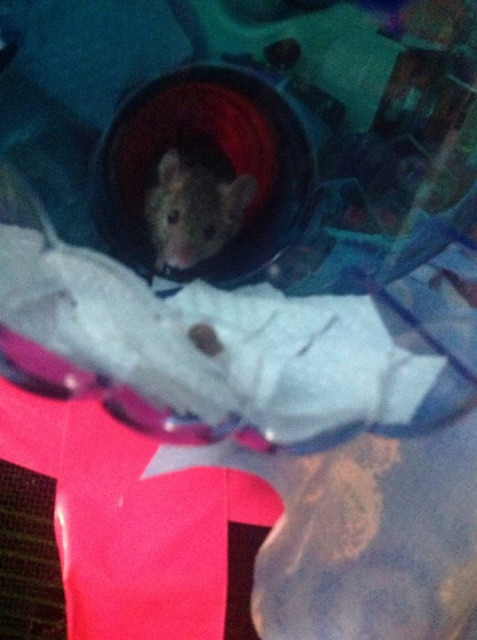 Runaway
Question
RUNAWAY Runaways mommy
I dont mea
Runaway
Question
RUNAWAY Runaways mommy
I dont mea
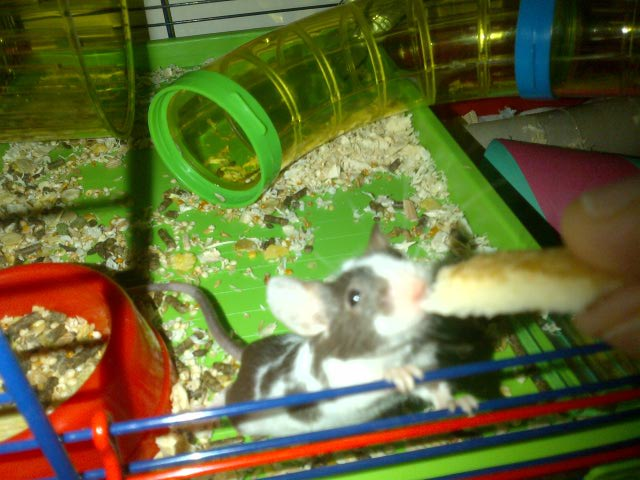 Mouse diet
QuestionSharing Dads lunch
Scattered Food
Mouse diet
QuestionSharing Dads lunch
Scattered Food
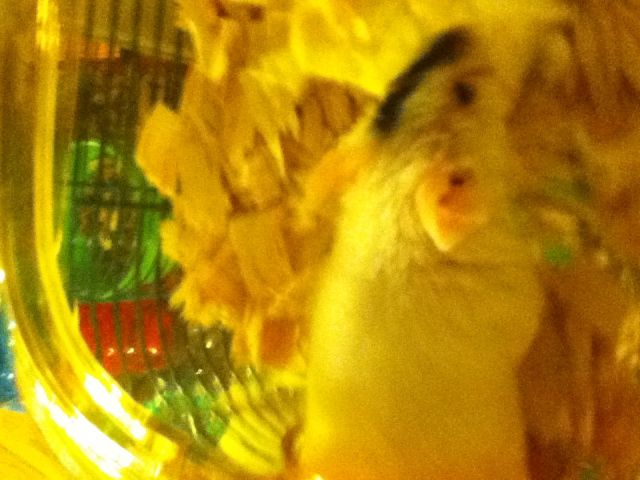 My Sick Mouse
Question
The Eye
Murphy, my fancy mouse, has had
My Sick Mouse
Question
The Eye
Murphy, my fancy mouse, has had
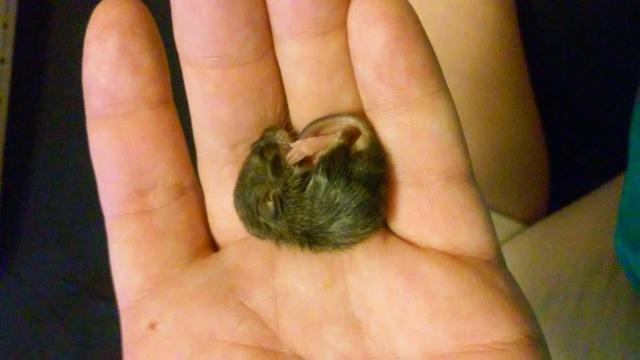 Is she to thin? Flavored pedialyte? HELP!!!
Question
Nym
About a week ago my boyfriend found
Is she to thin? Flavored pedialyte? HELP!!!
Question
Nym
About a week ago my boyfriend found
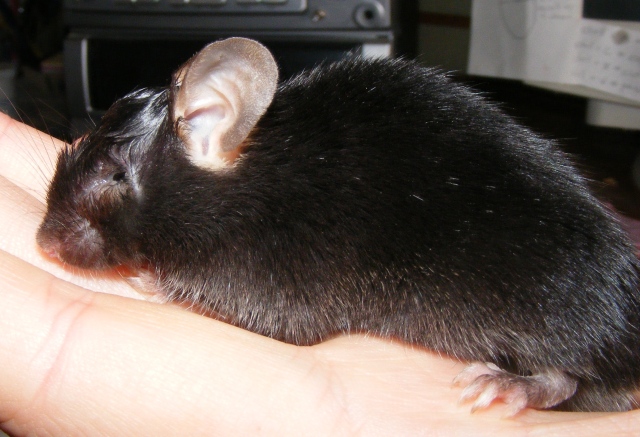 Radish in trouble! Bite leads to infection.
Question
Radish
Hi Natasha,
Just when I thought
Radish in trouble! Bite leads to infection.
Question
Radish
Hi Natasha,
Just when I thought